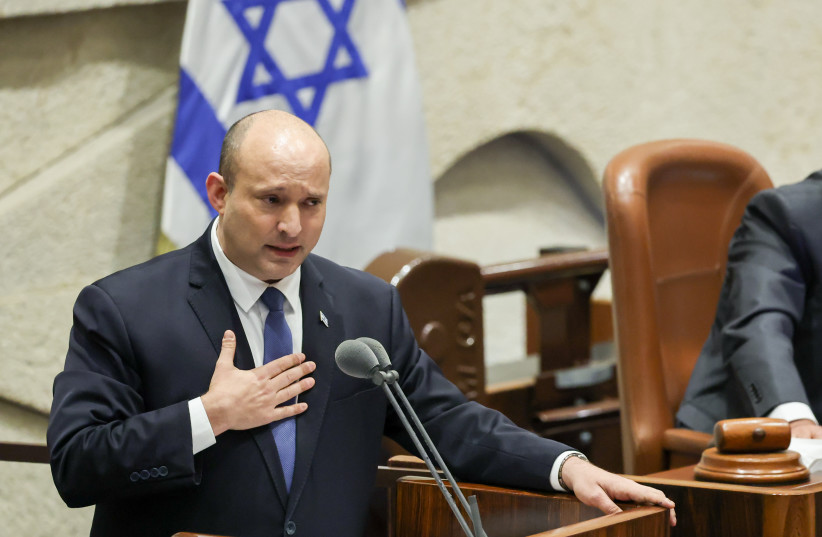The 2022 elections ended in a clear victory for the right-wing bloc led by prime minister-elect Benjamin Netanyahu, who won 64 mandates. In practice, the changes in the power of the right-wing parties were relatively minor in the 2022 elections, except for two parties: Religious Zionism/Otzma Yehudit led by Bezalel Smotrich and Itamar Ben-Gvir which grew by 5.7% (from 5.1% in the 2021 elections to 10.8% in the 2022 elections) and the Jewish Home (formerly Yamina) led by Ayelet Shaked which weakened by 5% (from 6.2% in the 2021 elections to 1.2% in the 2022 elections).
Yet instead of engaging in the democratic celebration and saluting the State of Israel, which once again proved that it is an exemplary democracy, many chose to emphasize the rise of Religious Zionism/Otzma Yehudit and present it as a real threat to Israeli democracy.
Unlike in the 2021 elections, right-wing voters did not stay at home in the 2022 elections. While in the cities identified with center-left voters the turnout remained the same as in the 2021 elections (Tel Aviv 0.4%, Givatayim 0.3%, Ramat Hasharon 0.1%, Herzliya 0.3% and Kiryat Tivon 0.4%), in right-wing cities the turnout increased significantly (Ashkelon 3.2%, Beer Sheva 4.6%, Ofakim 6.6% and Dimona 6.9%). This figure clearly illustrates the strengthening of the Netanyahu bloc, in which Religious Zionism/Otzma Yehudit, which increased from six mandates in the 2021 elections to 14 mandates in the 2022 elections, is a central component.
Where did Ben-Gvir and Smotrich get their new supporters from?
Many contemplated the conundrum of the source of the strength of Ben-Gvir and Smotrich party and where the votes that led to the rise of Religious Zionism/Otzma Yehudit came from. A common claim that has been heard more than once is that tens of thousands young Tel Avivians voted for the first time for the party at the ballot box, implying that they were center-left voters who just wanted to return the governance to the cities of Israel, especially after the “Guardian of the Walls” operation. In practice, Religious Zionism/Otzma Yehudit in Tel Aviv grew stronger by only 7,500 votes of all ages, a figure that clearly illustrates that this is not the source of the strengthening of the party.
HOWEVER, WHEN analyzing at the election results by cities, the phenomenon that clearly explains the source of the strength of Religious Zionism/Otzma Yehudit becomes perfectly clear. Not surprisingly, the outcome is that a huge majority of the new supporters of Religious Zionism/Otzma Yehudit in the 2022 elections voted for the right-wing party of Naftali Bennett and Ayelet Shaked, Yamina, in the 2021 elections. Both in the cities identified with the right, where Religious Zionism/Otzma Yehudit won significant success (Be’er Sheva 15.7%, Jerusalem 14.2% and Ashkelon 13.3%), and in cities identified with the center-left, the trend of votes shifting from Bennett to Ben-Gvir and Smotrich can be seen.

In Eben Yehuda, for example, a town identified with center-left voters, while the two blocs remained stable between the last two elections, and when the support for the other parties of the right-wing bloc remains more or less the same, a clear shift of 80% of Yamina voters in 2021 is seen in favor of religious Zionism/Otzma Yehudit. In right-wing cities, there was a shift in a higher proportion of votes from Bennett to Ben-Gvir and Smotrich.
These figures sound unnatural today since both Bennett and Shaked became legitimate after joining the bloc of Netanyahu’s opponents following the 2021 elections and the establishment of the Bennett-Lapid government. Many have forgotten that before that both were seen as extreme right-wing politicians who called, among other things, for the annexation of Area C territories.
Therefore, the question that should be asked today is as follows: Why are those Yamina voters in the 2021 elections, who were then perceived as kosher and legitimate for many in the center-left bloc, now seen as messianic, nationalist and racist? After all, these are the exact same voters who in the 2021 elections had chosen a right-wing party that is located at the far right of the political spectrum, while now in the 2022 elections they chose to do exactly the same. If this is not political hypocrisy, then what is?
The writer is a researcher at the Institute for National Security Studies (INSS) based at Tel Aviv University and a research fellow at the University of South Wales, UK.
